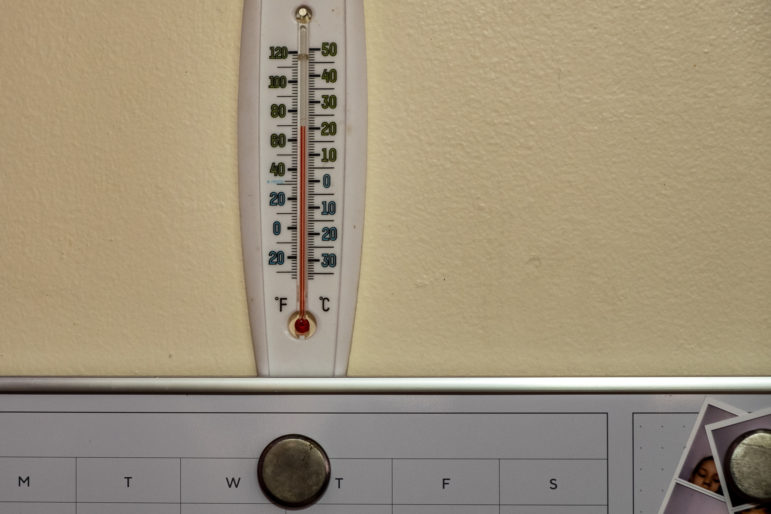
In a sprawling nearly-twelve hour long hearing on Wednesday in which over 60 health care advocates, policy makers and government officials were signed up to testify, advocates and government officials debated what was driving the costs of New York state’s Medicaid, how it should be addressed, and how to address the state’s aging population.
Here are the highlights:
State health officials were questioned about transparency
Health Commissioner Howard Zucker and Medicaid Director Donna Frescatore were both questioned by State Senator Gustavo Rivera about monthly Medicaid Global Cap reports which the state had stopped posting for several months before releasing a bundle of data this week.
Zucker was unable to answer why the data was unavailable for so long. He also could not answer questions from Assembly Health Committee Chair Richard Gottfried about whether the Gov. Cuomo’s newly announced Medicaid Redesign Team could either change the current cap on growth or raise taxes to generate revenue. The perceived lack of transparency led to some tension, and in a later part of the hearing, Rivera, referring to the administration, said “I would prefer information to good will.”
The governor does not seem to have his new Medicaid task force yet
In his budget plan, the governor announced he would be reconvening the Medicaid Redesign Team, the panel that led to sweeping changes in the state’s healthcare system when it was first convened nine years ago. The timeline for the MRT II, as the governor’s office is calling it, will be rushed, tasked to deliver recommendations before April 1. The co-chairs of that panel, labor leader Dennis Rivera and Northwell Health CEO Michael Dowling, have been announced.
But attempts by Rivera to find out who else has been appointed yielded no results. Over dozens of conversations, Rivera asked nearly every person who testified on Wednesday if they had been courted by the governor to be on MRT II.
All speakers said no. At most, a few speakers testified on the record that they had requested a seat at the table but had received no formal response.
There are disagreements about cost saving and fraud
There are disagreements about the reasons for the Medicaid budget gap, despite a consensus that Managed Long Term Care has a lot to do with it. Some argued that Managed Long Term Care plans and the Consumer Directed Personal Assistance Program, which allows patients to hire family members to provide in-home care, were susceptible to fraud and mismanagement, and drove spending. Others put the emphasis on higher Medicaid enrollment as a cost driver.
Bill Hammond of the Empire Center for Public Policy testified that, “From 2016 to 2018, New York’s over-75 population grew by 4 percent. During that same period, Medicaid managed long-term care enrollment jumped 31 percent, or almost eight times as fast.” (MLTC enrollment eligibility begins at age 65, and was not mandated until 2012.)
Helen Schaub, director of public policy at 1199 SEIU, also took issue with the way CDPA and MLTC’s were regulated. Schaub believes that the private insurance plans had created a perverse incentive to enroll healthy people and that administration of long term care should be returned to counties. “It’s about who gets paid to deliver the services,” she said.
There have been verified reports of fraud and double billing in CDPA, and even the union for fiscal intermediaries has called for better regulation. A 2017 audit by the state comptroller, for instance, found MLTC’s had paid $21 million in payments over five years to people who had already been disenrolled. A more recent audit found that people had been accidentally enrolled in fee-for-service plans under their counties – which generally award more hours than the less generous private insurance plans. There is no data suggesting that these incidents of fraud, abuse or double-billing could account for the massive growth in MLTC plans, which still remain difficult to obtain.
Lots of people want to revise or repeal that Medicaid global cap
The $2.5 billion Medicaid budget gap is the difference between actual spending and what is allowed under a cap on the growth rate — called the “Medicaid Global Cap.”. That cap adjusts for inflation but not new enrollment. Many health care professionals pointed out that, given the aging population, the cap should either be raised or repealed.
Ben Anderson, Director of Health Policy at the Children’s Defense Fund, for instance, compared the Medicaid Global Cap to recently announced plans for federal Medicaid Block Grants, which would impose a per person cap on spending rather than leave funding open-ended based on need.
He called the block grant and the Medicaid Global Cap “dangerous mechanisms that don’t account for changes in demographics, like a surging elderly population.”
“As long as there is a cap as there is today, we will keep having this conversation over and over again,” Anderson said. “Federal caps shift the burden to the states and counties.”
Representatives from 1199SEIU also want to revisit the cap, as does the NY Health Plan Association.
More people want the Medicaid budget to address aging
There were calls from advocates to meaningfully address the growing aging population by increasing funding rather than potentially cutting rates under MRT II. Karen Lipson, of Leading Age New York, said that while the governor had released a budget to confront climate change, she does not know of a budget to address demographic change, which has led to both workforce shortages from retiring medical professionals and aging people in need of care.
There is a lot of skepticism and anxiety about the MRTII
Advocates who testified were either openly expressing interest in a seat on the MRT II panel or expressed concern about how it would determine changes. Lindsay Heckler, of the Center for Elder Law and Justice in Buffalo, said the group was concerned about cuts that would impact Medicaid recipients. “Consumers are not a burden on the taxpayer,” she said. “Their lives should not be subject to politics.” She pushed back on the suggestion that Medicaid growth was itself the problem, saying, “The growth of Medicaid is not a surprise.”
The mayor’s office pushes back against cost shifts
During the hearing, Mayor de Blasio’s office released estimates of the city’s possible costs under a cap proposed in Cuomo’s budget.
The 3 percent growth rate cap for localities, combined with a another stipulation pegged to property taxes, could cost the city $1 billion a year, an amount that First Deputy Mayor Dean Fuleihan called “devastating” in a conference call with reporters, according to Politico.








